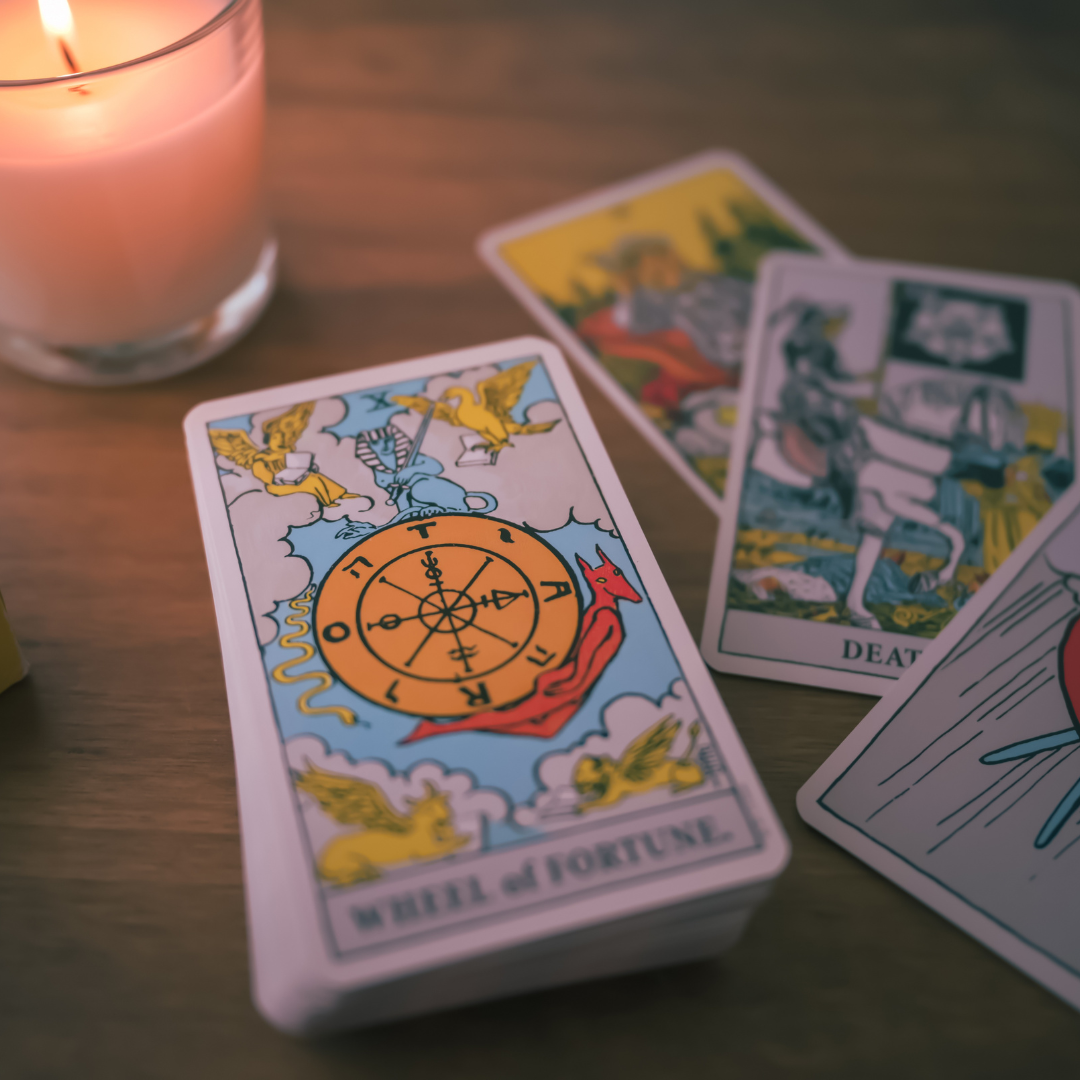IN THIS LESSON
History of Tarot
Understand the origins and evolution of Tarot
Explore the cultural and historical context of Tarot cards
Learn about influential figures in Tarot history
-
Unveiling the Mysteries: The Origins and Evolution of Tarot
The Tarot, a deck of mystical cards with a history steeped in mystery and intrigue, has captivated individuals for centuries. To truly grasp the art of Tarot reading, it is essential to embark on a journey to understand its origins, explore the cultural and historical context surrounding the cards, and delve into the lives of influential figures who have shaped the world of Tarot.
Understanding the Origins of Tarot:
The exact origins of Tarot are shrouded in the mists of time, contributing to the allure of this ancient divination tool. While theories abound, one prevailing belief is that Tarot originated in the 15th century in Italy as a card game. The earliest known Tarot decks were not created for mystical purposes but as a source of entertainment for the European nobility.
As Tarot evolved, its symbolism began to take on deeper meanings, transitioning from a mere game to a powerful tool for divination and self-discovery. The journey from a game played in the courts of Renaissance Europe to a revered instrument of insight is a testament to the transformative power and adaptability of Tarot.
Exploring Cultural and Historical Context:
To truly connect with the Tarot, one must delve into the cultural and historical tapestry that surrounds these enigmatic cards. Tarot has been influenced by various cultural and mystical traditions, including the Kabbalah, astrology, and Hermeticism. The fusion of these influences has given rise to a rich tapestry of symbolism within the Tarot deck.
The Tarot deck is divided into two main sections: the Major Arcana and the Minor Arcana. Each card within these sections carries unique symbolism, drawing from a diverse range of cultural and historical sources. Understanding the significance of these symbols is crucial for unlocking the profound messages hidden within the cards during a reading.
Learning from Influential Figures in Tarot History:
Throughout the ages, several influential figures have played pivotal roles in shaping the world of Tarot. One such figure is Arthur Edward Waite, an occultist who, along with artist Pamela Colman Smith, created the iconic Rider-Waite Tarot deck in the early 20th century. This deck, with its vivid imagery and symbolism, has become the standard for many Tarot enthusiasts.
Aleister Crowley, another influential occultist, contributed to Tarot with his Thoth Tarot deck. Crowley's deck is known for its intricate symbolism and esoteric connections, adding a layer of depth and complexity to Tarot readings.
Pioneers like Waite and Crowley have left an indelible mark on Tarot history, shaping the way we perceive and use the cards today. Studying their contributions provides insights into the evolution of Tarot and the diverse approaches to interpreting its mysteries.
In conclusion, unraveling the origins and evolution of Tarot, exploring its cultural and historical context, and learning from influential figures are crucial steps in mastering the art of Tarot reading. As we peel back the layers of history, we gain a deeper appreciation for the profound wisdom embedded within each card, inviting us to embark on a journey of self-discovery and divination.
-
Homework Assignment: Unlocking the Major Arcana Mysteries
Objective: To deepen your understanding of the Major Arcana cards, their symbolism, and meanings, and to practice interpreting them in various contexts.
Instructions:
1. Card Exploration:
o Select three Major Arcana cards from your Tarot deck. These can be cards you feel drawn to or chosen randomly.
o Spend time meditating on each card individually. Take note of the symbolism, colors, and any intuitive impressions you receive.
2. Research and Reflection:
o Research the historical and symbolic significance of each chosen Major Arcana card. Consult reputable Tarot resources, books, or online references to uncover the layers of meaning embedded in these cards.
o Reflect on how the historical context and symbolism enhance your understanding of each card. Consider any personal insights or connections that arise during this exploration.
3. Personal Narrative:
o Create a short narrative for each Major Arcana card based on your research and personal reflections. Imagine the journey of the Fool through these cards and how each one contributes to their evolving story.
o Write down any emotions, themes, or messages that emerge from your exploration. This exercise encourages you to develop a personal connection with the Major Arcana.
4. Interpretation Practice:
o Shuffle your entire Tarot deck and draw a single Major Arcana card.
o Without referring to any guidebooks initially, interpret the card based on your knowledge, intuition, and the insights gained from your research and personal reflections.
o After jotting down your interpretation, compare it with traditional interpretations from Tarot guidebooks or reputable online sources. Take note of any similarities or differences.
5. Reflective Journaling:
o Record your experiences, challenges, and discoveries in a Tarot journal. How did your understanding of the Major Arcana deepen through this exercise? Did you encounter any surprises or insights?
o Consider any patterns or recurring themes that emerged during your exploration. Reflect on how this homework assignment has contributed to your overall Tarot journey.
This homework assignment is designed to foster a deeper connection with the Major Arcana cards, encouraging personal exploration and interpretation. Embrace the journey of unlocking the mysteries within each card and enjoy the process of connecting with the profound symbolism of the Tarot.

